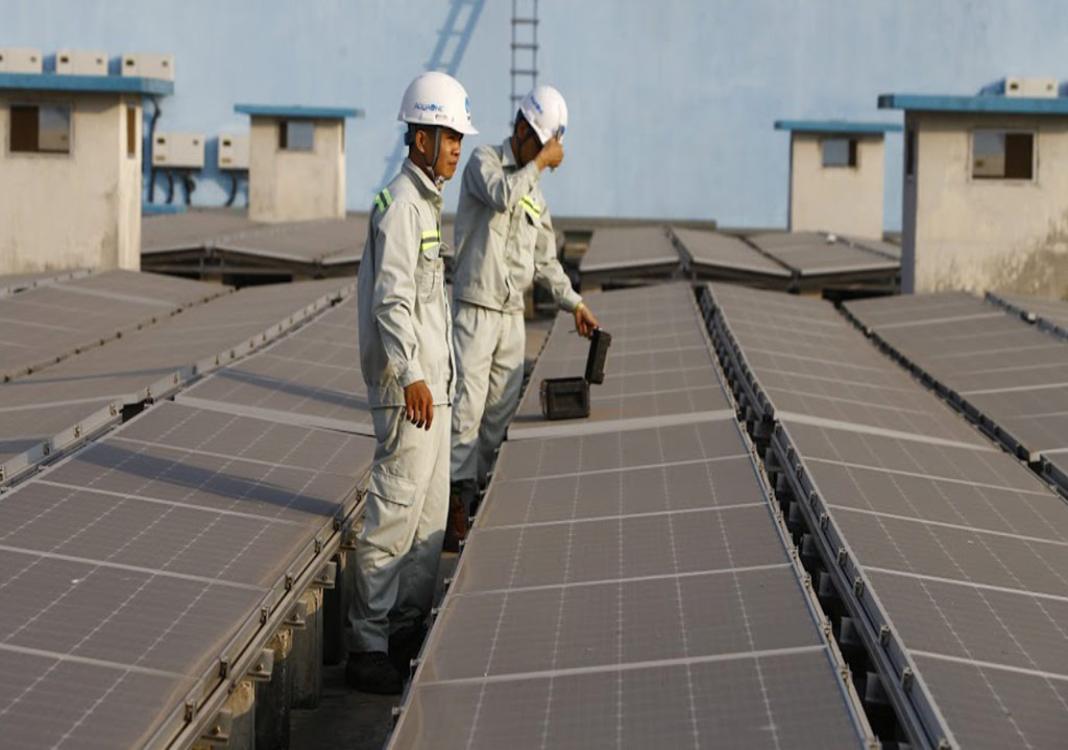HCMC – The country’s feed-in tariff mechanism for rooftop solar energy projects, a policy tool designed to stimulate investment, is set to be abolished, according to officials at a workshop on Monday.
The workshop on rooftop solar energy in industrial parks was held by the Vietnam Chamber of Commerce and Industry and the Green Innovation and Development Center (GreenID), reported news website VnExpress.
The purchase price for rooftop solar electricity is 8.38 cents per kilowatt hour, according to a 2020 government decision, which expired late that year.
So far this year, solar power investors have been waiting for a new pricing policy for this source of energy, including rooftop solar power, said Pham Trong Quy Chau, deputy head of the Renewable Energy Department with the HCMC Export Processing Zone and Industrial Park Authority Business Association.
He said the wait-and-see situation has put these investors on edge.
Still, the Ministry of Industry and Trade and the national electricity buyer Vietnam Electricity Group (EVN) have not given any follow-up guidance on procedures for the grid connection process, power purchase agreements and the payment for rooftop solar power.
The ministry is drafting a new decision on the mechanism for renewable energy, including rooftop solar power, said Pham Nguyen Hung, deputy head of the Electricity and Renewable Energy Authority.
The new policy will get rid of the feed-in pricing policy, which has been adopted for two decades, according to the official.
Hung revealed the on-site power consumption rate among these projects is expected to account for a staggering 70% to 90% of the total while the rest will be sold to EVN.
The move is intended to ease pressure on grid investment, as well as power transmission and distribution, he said.
The power purchase price has been put on the table for discussion in a way that will help investors recoup their capital while bringing benefits for EVN, he said, adding that the ministry will annually regulate the price bracket to be closely aligned to market conditions.
Rooftop solar power projects will no longer be limited to capacity below one megawatt-peak, a solar power measure in the photovoltaic industry to describe a unit’s nominal power.
Instead, the capacity will be expanded to seven, or even eight megawatt-peak, and it will be connected to the grid systems of less than 35 kilovolts so that EVN will not have to invest in new grids for rooftop solar energy.
The new policy would fully exploit the available infrastructure in rooftop solar installations. “Rooftop solar power is a distributed energy resource using the roofs of existing and underway buildings. (This type of power) is able to meet the needs for on-site electricity and make use of the available distribution grid,” Hung said.
Nguyen Thi Khanh, director of Green ID, said it might not be a good idea to extend feed-in tariffs, and the new policy should be designed to promote the power market since investors are facing a host of legal barriers.
If the Government wants to develop this type of energy, the policy should be consistent and long-lasting to win investor confidence and attract their resources.
EVN data reveals as of late 2020, Vietnam had over 100,000 rooftop photovoltaic systems which were linked to the national grid system at a total installation capacity of over 9,200 megawatt-peak.
So far, the total solar energy output had risen to around 1.15 billion megawatt hours, thereby helping supply electricity for the national energy grid.











